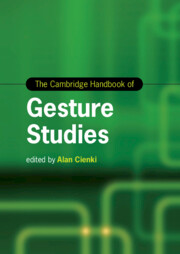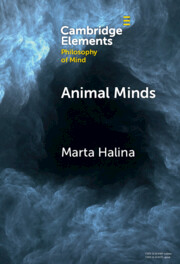1532 results
Chapter 4 - Intelligence, Cognition, and Expertise
- from Part I - Transitions
-
- Book:
- Transition Expertise and Identity
- Published online:
- 30 May 2024
- Print publication:
- 06 June 2024, pp 37-56
-
- Chapter
- Export citation
The role of neuropsychology in the care of patients with functional neurological symptom disorder
-
- Journal:
- Journal of the International Neuropsychological Society , First View
- Published online by Cambridge University Press:
- 30 May 2024, pp. 1-8
-
- Article
-
- You have access
- Open access
- HTML
- Export citation
Exploring decision-making performance in young adults with mental health disorders: a comparative study using the Cambridge gambling task
-
- Journal:
- Psychological Medicine , First View
- Published online by Cambridge University Press:
- 09 May 2024, pp. 1-7
-
- Article
-
- You have access
- Open access
- HTML
- Export citation
The impact of egg consumption on cognitive function: a systematic literature review
-
- Journal:
- Proceedings of the Nutrition Society / Volume 83 / Issue OCE1 / April 2024
- Published online by Cambridge University Press:
- 07 May 2024, E181
-
- Article
-
- You have access
- Export citation

The Cambridge Handbook of Gesture Studies
-
- Published online:
- 01 May 2024
- Print publication:
- 18 April 2024
Development and validation of a nonverbal consensus-based semantic memory paradigm in patients with epilepsy
-
- Journal:
- Journal of the International Neuropsychological Society , First View
- Published online by Cambridge University Press:
- 15 April 2024, pp. 1-9
-
- Article
-
- You have access
- Open access
- HTML
- Export citation
Impact of elevated body mass index (BMI) on cognitive functioning and inflammation in persons with post-COVID-19 condition: a secondary analysis
-
- Journal:
- Acta Neuropsychiatrica , First View
- Published online by Cambridge University Press:
- 12 April 2024, pp. 1-7
-
- Article
- Export citation
About the same thing in a different way: wording and experienced emotions in the understanding of official letters
-
- Journal:
- Language and Cognition , First View
- Published online by Cambridge University Press:
- 11 April 2024, pp. 1-30
-
- Article
-
- You have access
- Open access
- HTML
- Export citation
Relative associations of behavioral and physiological risks for cardiometabolic disease with cognition in bipolar disorder during mid and later-life: findings from the UK biobank
-
- Journal:
- Psychological Medicine , First View
- Published online by Cambridge University Press:
- 02 April 2024, pp. 1-11
-
- Article
-
- You have access
- Open access
- HTML
- Export citation
A systematic review of the cognitive effects of the COMT inhibitor, tolcapone, in adult humans
-
- Journal:
- CNS Spectrums / Volume 29 / Issue 3 / June 2024
- Published online by Cambridge University Press:
- 15 March 2024, pp. 166-175
-
- Article
-
- You have access
- Open access
- HTML
- Export citation
16 - Evolutionary Psychology
-
-
- Book:
- Human Behavioral Ecology
- Published online:
- 07 March 2024
- Print publication:
- 14 March 2024, pp 380-401
-
- Chapter
- Export citation
Cognition in trichotillomania: a meta-analysis
-
- Journal:
- CNS Spectrums / Volume 29 / Issue 3 / June 2024
- Published online by Cambridge University Press:
- 13 March 2024, pp. 158-165
-
- Article
-
- You have access
- Open access
- HTML
- Export citation
Association of Alcohol Consumption with Cognition and Functionality in Older Adults Aged 75+ Years: The Pietà Study
-
- Journal:
- Canadian Journal on Aging / La Revue canadienne du vieillissement , First View
- Published online by Cambridge University Press:
- 12 March 2024, pp. 1-11
-
- Article
- Export citation
Neuropsychological correlates of early grief in bereaved older adults
-
- Journal:
- International Psychogeriatrics , First View
- Published online by Cambridge University Press:
- 11 March 2024, pp. 1-6
-
- Article
- Export citation
Neurocognitive correlates of metabolic dysregulation in individuals with mood disorders: a systematic review and meta-analysis
-
- Journal:
- Psychological Medicine / Volume 54 / Issue 7 / May 2024
- Published online by Cambridge University Press:
- 07 March 2024, pp. 1245-1271
-
- Article
-
- You have access
- Open access
- HTML
- Export citation

Animal Minds
-
- Published online:
- 07 March 2024
- Print publication:
- 04 April 2024
-
- Element
- Export citation
Models of mild cognitive deficits in risk assessment in early psychosis
-
- Journal:
- Psychological Medicine , First View
- Published online by Cambridge University Press:
- 04 March 2024, pp. 1-12
-
- Article
- Export citation
Robust reference group normative data for neuropsychological tests accounting for primary language use in Asian American older adults
-
- Journal:
- Journal of the International Neuropsychological Society / Volume 30 / Issue 4 / May 2024
- Published online by Cambridge University Press:
- 01 March 2024, pp. 402-409
-
- Article
-
- You have access
- Open access
- HTML
- Export citation
A longitudinal study of the gut microbiota during the first three years of life: links with problem behavior and executive functions at preschool age – CORRIGENDUM
-
- Journal:
- Development and Psychopathology , First View
- Published online by Cambridge University Press:
- 29 February 2024, p. 1
-
- Article
-
- You have access
- Open access
- HTML
- Export citation
Visual associative learning to detect early episodic memory deficits and distinguish Alzheimer’s disease from other types of dementia
-
- Journal:
- Journal of the International Neuropsychological Society , First View
- Published online by Cambridge University Press:
- 23 February 2024, pp. 1-10
-
- Article
-
- You have access
- Open access
- HTML
- Export citation



